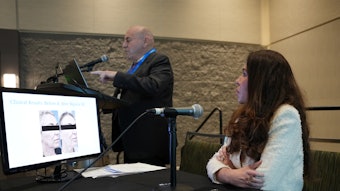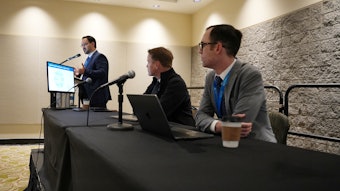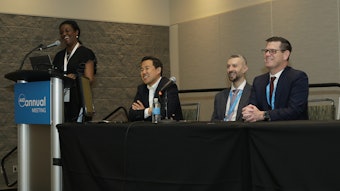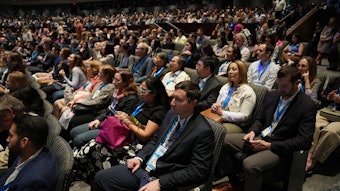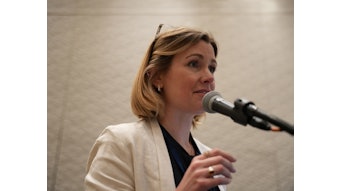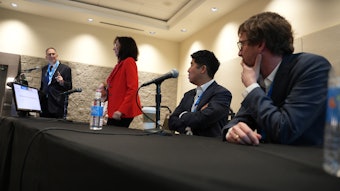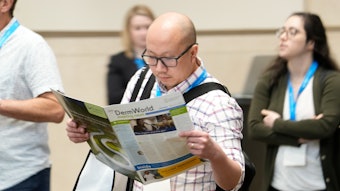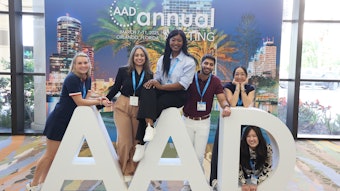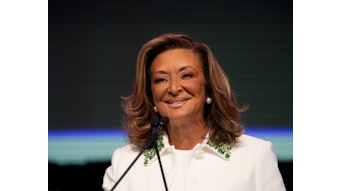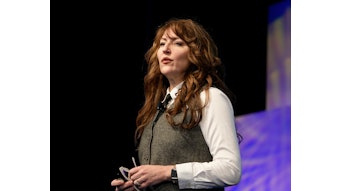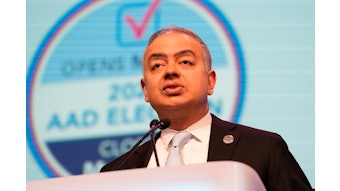Scarring and skin types
Treating scars on ethnic skin presents its own unique set of challenges.
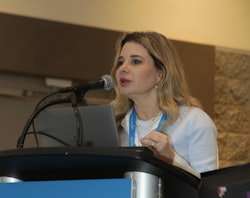
Treatment for scars can be as varied as the types of skin on which they occur. Knowing which technique to use — and when to use it — can be the difference between a long-lasting scar and a scar that becomes virtually invisible over time.
This was the subject of Monday’s session, F088 – The Art of Healing — Scar Management Strategies Tailored to Ethnic Skin.
Session director Gisele Viana, MD, MSc, PhD, IFAAD, was part of a research group that conducted a study comparing treatments for keloids and scars. The paper, “Silicone Versus Nonsilicone Gel Dressings: A Controlled Trial,” was published in Dermatologic Surgery in 2001.
Dr. Viana, who is a dermatologist in Minas Gerais (MG), Brazil, and a professor at Medical Sciences School of MG, said that prior to the study, people believed that silicones were useful in treating these lesions and were even thought to be absorbed by the skin with some anti-scarring properties.
“We showed that silicone was not the necessary ingredient, but occlusion was. So both dressings were equally effective,” she said.
Since then, she helped publish a 2020 follow-up study in Journal of Cosmetic Dermatology that backed these findings, which has led to better outcomes and less painful treatments for patients with scarring, especially when combined with more modern treatment methods. Dr. Viana’s research group has also recently published the Brazilian consensus of scar and keloid treatments in Journal of the European Academy of Dermatology and Venereology.
“We observed that when we occlude keloids and scars with dressings, we soften the lesions, allowing for easier injections of drugs commonly employed to treat keloids,” she said. “We were able to get less painful treatments with fewer drugs, and when combined with lasers, we get faster responses.”
Dr. Viana said she recommends four steps for treating scars with occlusion, which involves the ASAP algorithm:
- Assessment: Avoid premature attempts to inject a hard tissue.
- Soften with occlusive dressings.
- Approach with lasers and injections.
- Pigmentation: Postpone treatment of pigmentation until the scar is flat.
“We have now finished [another] study showing that using this method on patients of skin of color has natural results, with a dramatic decrease in recurrences in keloids followed up to 10 years,” she said.
Other therapies and side effects
Treatments including antifibrotic drugs, antineoplastic, and steroids, can lead to side effects in higher phototype skin, presenting a challenge for dermatologists. Leandra d’Orsi Metsavaht, MD, IFAAD, said keloids affect up to 16% of the African, Asian, and Hispanic populations.
“Most patients seek medical treatment not just for the aesthetic aspects of the scar, but because of pain, itching, and stinging that usually impact their quality of life,” she said. “That’s the reason scars should be evaluated globally using the main validated scales, like the Patient and Observer Scar Assessment Scale (POSAS).”
Dr. d’Orsi Metsavaht, who is a dermatologist in Rio de Janeiro, Brazil, has partnered on several studies involving burn scars, including the one that first suggested the ASAP algorithm to treat scars, as mentioned above. The researchers realized that there was not one single treatment to reach the best results.
“For instance, injections should not be the first step. Although steroids may be the gold standard for the treatment of keloids and a secondary treatment for hypertrophic scars, they can cause severe skin atrophy,” she said. “Also, the recurrence rate for pathological scarring treated by corticosteroid injection can be as high as 50%.”
There has been a lot of research into botulinum toxin type A (BTX-A) as an effective treatment for keloids. Dr. d’Orsi Metsavaht said it induces muscle paralysis, which in turn reduces muscle and skin tension, alleviating scar hyperplasia. Some studies have also shown that BTX-A may reduce the growth rate of fibroblasts and the rate of their division, which affects keloid development.
“Ongoing research in this field underscores the need for more comprehensive clinical studies to establish effectiveness and the optimal protocols for utilizing BTX-A in the management of keloids,” she said. “Therefore, I use BTX-A only in cases where the scar is in a high-tension area, like the forehead or the neck.” She added that additional antifibrotic drugs, such as verapamil, 5 fluorouracil, and bleomycin, can also be used.
Botox, fillers, and biostimulators
As important as it is for more research, Doris Hexsel, MD, IFAAD, said that botulinum toxins — along with fillers and biostimulators — have proven to be beneficial scar treatment options for ethnic skin. Of note, she said their side effects are no different from those that may occur in Caucasian skin.
Dr. Hexsel, who is medical director of Hexsel Dermatologic Clinics in Rio de Janeiro and Porto Alegre, Brazil, said one potential new treatment that is not even on the market yet is botulinum toxin E (BTX-E).
“The immobilization of underlying muscles allows the healing process to proceed in a better way. My impression is that BTX-E, which has a fast and short action, will have a good indication for immobilizing the healing area of wounds, among its effects on fibroblasts,” she said.
Fillers, such as hyaluronic acid, continue to be important tools for treating scars in ethnic skin. Dr. Hexsel said they are indicated for distensible scars to improve their contour.
“Advantages include safe, quick, and long-lasting results,” she said. “Hyaluronic acid fillers last much longer in scars since they are implanted at multiple levels of the skin. Intradermal hyaluronic acid implants may cause a bluish effect but they can remain effective for years.”
Biostimulators, meanwhile, can be used to treat skin laxity which improves the underlying scars. However, the literature is poor regarding this therapeutic avenue. In the end, Dr. Hexsel said it is important for dermatologists to be aware of how to best manage scarring in all skin types.
“The challenges are to make a proper diagnosis and use the proper technique,” she said. “This includes knowing the type of scar, the time frame and duration of the treatment, the number of sessions needed, and, of course, the cost.”
Additional presenters in this comprehensive and popular session were: Michael H. Gold, MD, FAAD; Álvaro Andrés Luque Acevedo, MD, IFAAD; Daniela Guzmán Sánchez, MD, iFAAD; and Alexandra Y. Zhang, MD, FAAD.
